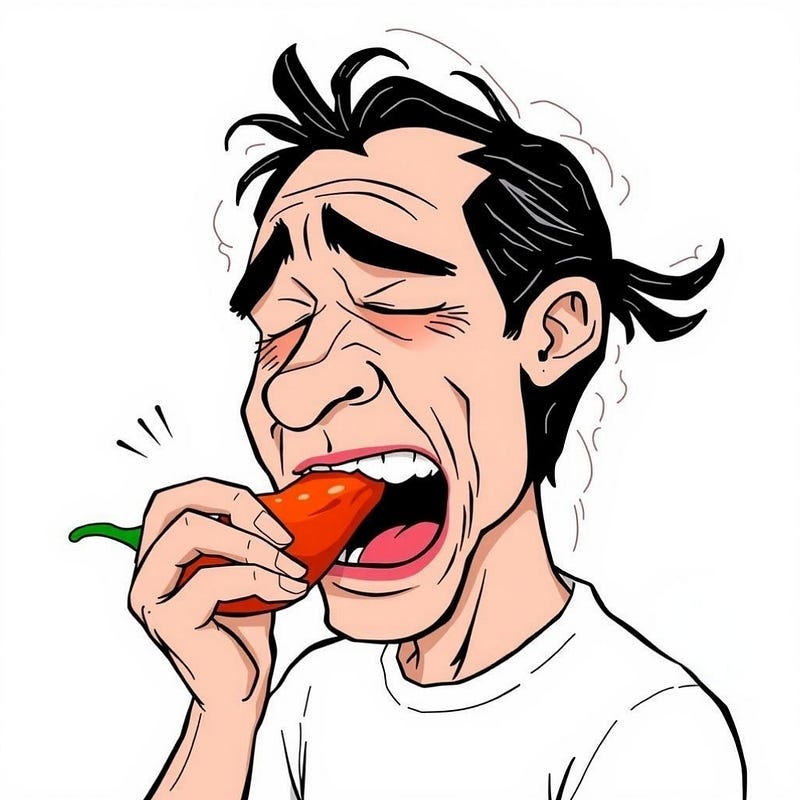Exploring the Fascination with Spicy Foods: Psychology and Biology
Written on
Chapter 1: The Allure of Spicy Foods
What drives our passion for spicy cuisine? This phenomenon goes beyond mere flavor; it intertwines biology and psychology. When we indulge in a spicy dish, we often think of it as a taste experience. However, scientific research reveals that spiciness is not a taste in the traditional sense. While we recognize salty or sour through our taste buds, spiciness stimulates a unique sensory perception.
Section 1.1: Understanding the Sensation of Heat
When consuming spicy foods, our body activates neurons known as polymodal nociceptors. These receptors, distributed throughout our body, also respond to temperature, leading to that familiar burning sensation. Intriguingly, our brain interprets these signals similarly to actual pain, creating the feeling of warmth.
Subsection 1.1.1: The Chemistry Behind Spiciness
Different spices evoke distinctive sensations due to their chemical makeup:

- Mouth Burners: Chili peppers (rich in capsaicin) and black pepper (containing piperine) are larger molecules that linger in the mouth, producing a localized burn.
- Nasal Irritants: Mustard, horseradish, and wasabi feature smaller molecules (isothiocyanates) that quickly reach the sinuses, creating a burning sensation there.
Curious about your spice tolerance? Check out the Scoville Scale! It measures spiciness by evaluating how much capsaicin can be diluted before the heat becomes perceptible:
- Bell pepper: 0 Scoville Heat Units (SHU)
- Tabasco sauce: 1,200-2,400 SHU
- Carolina Reaper pepper: ~2.2 million SHU
- Pepper X: ~3.18 million SHU (currently the hottest pepper in the world)
- Pepper spray: ~2-4 million SHU (varies by brand)
Section 1.2: The Historical Context of Spices
The historical significance of spices offers intriguing insights. Archaeological discoveries suggest their usage stretches back thousands of years.
Mustard seeds, for instance, have been uncovered with artifacts dating back 23,000 years, though their precise application remains uncertain. Recent findings, however, indicate that mustard seeds were likely used for seasoning in ancient cooking. A cooking pot from 6,000 years ago exhibits remnants of mustard and charred food, hinting at early culinary practices.
Chapter 2: The Psychological Aspect of Spice Cravings
Why do some individuals crave spicy foods despite the discomfort? The reasons are multifaceted.

Some enthusiasts seem to relish the challenge, consuming fiery dishes even when tears stream down their faces, often proclaiming it as their favorite meal. Research suggests that these spice aficionados might also engage in other thrill-seeking activities. Genetic predisposition could play a role; some people may have a natural resistance to capsaicin, allowing them to enjoy heat while others struggle.
Is it possible to train oneself to enjoy spiciness? The answer lies not in toughening your taste buds, but rather in learning to appreciate the sensation. It’s akin to developing a quirky form of pain tolerance. The next time you find yourself sweating over a spicy dish, remember it’s all in your mindset. Embrace the experience; you might even grow to love it—or you might end up with an upset stomach. Regardless, it’s bound to be an adventure.
In this video, "Why Do We Like Spicy Food?", we explore the psychological and cultural factors influencing our preference for spicy flavors.
The video "Why Do Some People Tolerate Spicy Food?" delves into the biological variations that determine spice tolerance among individuals.